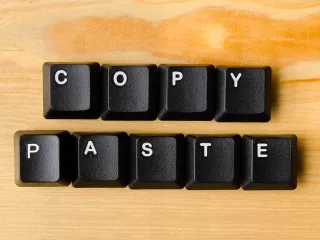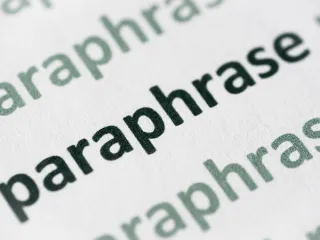Have you received your first term paper assignment and are wondering how to start? Or are you a social science graduate student starting your research project? You may even be a new marketing consultant with a big presentation coming up, and you need to research competitors to determine your product marketing position.
Whatever the case, you must research to understand your material better.
Research allows deeper understanding, prevents lies, and spreads knowledge to promote informed decision-making. It is critical to ensure well-done research and always to utilize reliable sources, but this can seem like a huge task, especially when your education or career is on the line.
Conducting research is not as complicated as it seems; good research comes down to having the right process and skills. What are research skills? Research skills include doing a literature review, working on collaborations, understanding the full text, and much more.
We’ve outlined below the simple step-by-step process of conducting research to help complete your project easily.
Step 1: Define Your Research Question Clearly
The first step you need to do in your research is to define your research question clearly. Having a specific research question in mind will help you stay sharp and pay attention to the details of what you’re reading on the page.
You can develop an excellent research question by following these steps:
- Start with a broad topic. Something like ‘Trash accumulation in the ocean.’
- Do some basic research. See what people are saying lately about your topic; this will help you find your focus.
- Narrow down your topic. Based on current issues, it looks like the growth of plastic litter might be a good focus.
- Construct your research question. Be as specific as possible regarding what you’ll research.
Take a look at these examples of good and bad research questions using our topic about trash accumulation in the ocean:
Bad: How does trash accumulation happen in our oceans?
Good: How quickly is plastic litter accumulating in the Great Pacific Garbage Patch, and what is causing it?
By precisely formulating your question, you save time in searching for information, scanning pages, and randomly clicking on links that may not be relevant.
Step 2: Determine Which Research Methods You’ll Use
Next, decide what type of research methods you’re going to use. Base your research methods on the research question you plan to address.
There are many research methods to choose from when writing a research paper. But only some approaches are appropriate for some research questions. There are several research methodologies you may use, including:
- Qualitative research: Based on qualities or descriptors.
- Quantitative research: Focuses on numbers and data.
- Descriptive research: All about describing an item’s nature, appearance, function, or other ways.
- Experimental research: Includes actual experimentation to reach a conclusion.
Depending on the type of research you’re doing, you may use any of the methods above in research you conduct yourself, such as surveys, interviews, or experiments. Research that you manage yourself is known as primary research. Alternatively, you may use secondary research, which analyzes the data collected or ideas argued by someone else. Most research papers will benefit from some form of secondary research so long as the source is reliable.
Step 3: Find Data From Reliable Sources
The sources you use in your research must be reliable; using even one unreliable source may cause readers to doubt the validity of the rest of your research. Reliable sources are easy to find when you start your research at a university library, and sources like peer-reviewed journal articles and government agencies are usually safe bets.
Using a search engine to find information can also uncover great sources—but you may find some unreliable information that way. When finding new sources, always make sure they’re credible by looking for things like:
- a recent publication date
- author and publisher credentials
- sources that directly address your research question
- sources that do not have any known bias
Researchers are always encouraged to use various sources of information from different points of view. Research that shows opposing sides of an argument from academic and non-academic sources shows that you’ve fully researched your topic.
Step 4: Focus on Your Note-Taking
Once you’ve discovered credible and relevant sources, it’s time to take detailed notes.
When taking notes, use whatever style works for you. You may prefer to copy and paste content from an online source to your digital notepad. Or, maybe you like writing notes down by hand on index cards. Make sure you take pertinent notes no matter what type of note-taking you like.
Browse the table of contents with your sources or do a keyword search within a digital source to quickly find information that relates to your topic. As you gather information, note exact phrases or sentences that provide data, insight, or opinions about your research question. Take notes on anything that appears useful information you can include in your findings. Include smaller details that may be helpful to note as background information to help bolster your argument.
Include the source title, author, page number, or URL in your notes so you can easily go back and find that information again later. Often, it helps to take another look at your research paper
outline and headings to ensure you find enough facts to fill in each section.
Step 5: Draft Your Research Paper
Once you have all your research and notes, it’s time to start working on the draft of your research paper. If your outline and notes were thorough and your sources were strong, then good news: this is the easiest part!
Match your detailed notes with your outline, and start drafting your research paper in a way that connects the dots from one source and supplemental point to another. Add in your analysis and opinions as relevant.
At this stage in your research, ensuring proper citation of all ideas and information mentioned in your paper is more important than ever. It always helps to use a free plagiarism checker to double-check that no citations get accidentally overlooked.
After penning your draft, proofread your text for punctuation, grammar, and readability, and double-check that there are no occurrences of accidental plagiarism before turning in your research paper. If you’re worried, check out our tips on recognizing and avoiding plagiarism in your research paper.
Conclusion
Conducting good research ensures that you can have accurate and convincing work. Whether you’re writing your high school term paper or preparing your research project for your Master’s degree, you must do your research. These research tips help you confidently begin your research journey.
When compiling your research to write your paper, a citation generator can help you organize and properly cite your research sources in any format, including APA, MLA, and Chicago. It also ensures that your work is not flagged as plagiarized. Plagiarism is a severe offense that can cost your grades and possibly your degree.









